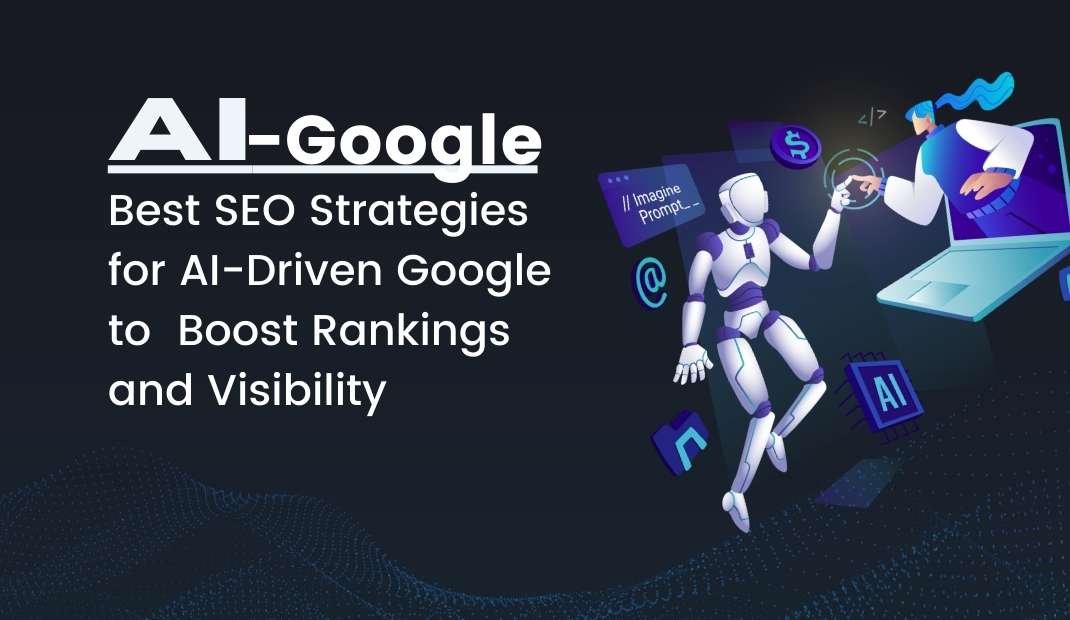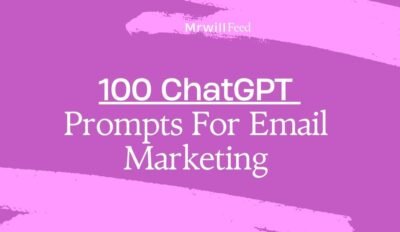Artificial intelligence (AI) is at the forefront of changing or upgrading business strategies, as well as the SEO Strategies for AI-driven Google. From search engines to web design, AI is significantly shaping the future of marketing. This article will help you understand how AI will transform various marketing strategies and what businesses you need to do to stay competitive.
Table of Contents
SEO Strategies for AI-Driven Google
Google has firmly established itself as an “AI-first” company, combining artificial intelligence into all aspects of its functions. This means that AI will increasingly influence search results, making Google more casual in its interactions. Use the below-mentioned tactics to grow your presence in the market and improve your branding.
1. Use Latent Semantic Indexing (LSI)
Include Related Keywords to Enhance Search Relevance!
Latent Semantic Indexing (LSI) is a technique used by search engines like Google to understand the relationships between words and concepts within your content.
Unlike traditional keyword matching, LSI enables Google to recognize contextually related terms, helping it to better understand the topic of your content.
By incorporating LSI keywords—words and phrases that are semantically related to your primary keyword—you can improve your content’s relevance and ranking possibility.
For example, if your primary keyword is “digital marketing,” LSI keywords might include terms like “SEO,” “content marketing,” “social media strategy,” and “PPC advertising.” Using these related terms not only signals to Google that your content covers the topic comprehensively, but it also enhances the user experience by providing more depth and context.
Fact: According to a Backlinko study, the top-ranking pages in Google tend to include a higher variety of LSI keywords, which suggests that Google favors pages with diverse but related content.
Action Tip: Use tools like LSIGraph or Google’s own “Related Searches” feature to find and incorporate LSI keywords into your content. (You can find the related searches at the bottom of your search query)

2. Create High-Quality Content
Google’s AI-powered algorithms, such as BERT and RankBrain, have evolved to prioritize content that offers real value to users. This means your content needs to be informative, well-researched, and engaging.
High-quality content typically answers users’ questions, solves their problems, or provides new insights, rather than simply being keyword-stuffed for SEO purposes.
Google measures the quality of content by analyzing user engagement metrics, such as dwell time (how long users stay on your page), click-through rates (CTR), and bounce rates (how quickly users leave your site).
Pages with higher engagement are more likely to rank higher because they indicate to Google that users find the content valuable.
Fact: A study by SearchMetrics found that content quality, as measured by factors like readability, content structure, and user engagement, is one of the most important ranking factors for Google.
Action Tip: Focus on creating in-depth, well-structured content that is easy to read and offers real value to your audience. Use tools like Grammarly for readability and research your topics thoroughly.
3. Use Natural Language
With the rise of voice search and conversational AI, natural language processing (NLP) has become a key component of Google’s search algorithms. Users are increasingly turning to voice assistants like Siri and Google Assistant to ask conversational questions, which means your content needs to be written in a way that mirrors how people speak.
For instance, instead of writing in a formal, keyword-heavy style, opt for a more conversational tone that addresses the reader directly. This approach helps Google recognize that your content matches the natural language queries users are inputting, especially with the increased use of voice search.
Fact: According to a report by Comscore, 50% of all searches were expected to be voice searches by 2020, highlighting the importance of natural language optimization.
Action Tip: When writing content, use simple language, short sentences, and a conversational tone. Tools like Hemingway Editor can help you write more naturally.
4. Include Questions in Your Content
One of the most effective ways to optimize your content for both voice and text searches is to include questions and their answers directly within your content.
People often phrase their searches as questions, especially when using voice search. By including common questions related to your topic, you increase the chances of your content being featured as a Google Answer Box (or “Position Zero”) result.
For example, if you’re writing about SEO, including questions like “What is SEO?” or “How does SEO work?” within your content can improve your chances of ranking for those queries.
Fact: A study by SEMrush found that 70% of Google’s Answer Boxes (featured snippets) contain content that directly answers user questions.
Action Tip: Use tools like AnswerThePublic or Google’s “People Also Ask” feature to find common questions related to your topic, then incorporate and answer those questions within your content.
5. Focus on Search Intent
Understanding search intent is crucial for creating content that meets user expectations. Search intent refers to the reason behind a user’s search query. Are they looking for information, trying to make a purchase, or seeking a specific website? By aligning your content with the user’s intent, you can increase your chances of ranking higher and satisfying searchers.
There are four main types of search intent:
- Informational: The user wants to learn something (e.g., “What is AI?”).
- Navigational: The user is looking for a specific website (e.g., “YouTube login”).
- Transactional: The user intends to make a purchase (e.g., “buy iPhone 15”).
- Commercial Investigation: The user is researching before making a purchase (e.g., “best laptops 2024”).
Fact: Research by Ahrefs shows that nearly 80% of all searches are informational, emphasizing the importance of creating content that answers user questions.
Action Tip: Identify the primary intent behind the keywords you’re targeting and tailor your content to meet that intent. For informational queries, provide detailed answers; for transactional queries, focus on product features, benefits, and calls to action.
Computer Vision Will Make Images Searchable: Optimize Your Visual Content
Google’s AI capabilities are expanding to include computer vision, enabling the search engine to interpret and search images. As this technology becomes more sophisticated, the quality of your visual content will play a critical role in your overall SEO strategy.
Action Steps:
- Replace Low-Quality or Borrowed Images: Ensure your images are original, relevant, and of high quality.
- Use Images That Reinforce Your Topic: Make sure your visuals support the message of your content.
Predictive Analytics Will Elevate Marketing Personalization
Currently, cookies track users to serve personalized ads. With AI-driven predictive analytics, marketing will become even more targeted. Machine learning will anticipate user preferences and behaviors, delivering hyper-personalized experiences across platforms.
What You Should Do:
- Create User Profiles: Use your website to gather detailed user information.
- Track Data Effectively: Collect and analyze as much user data as possible to refine your marketing efforts.
- Know Your Buyer Persona: A deep understanding of your audience’s demographics and preferences is key to success.
Chatbots Will Be a Must-Have for Businesses
AI-powered chatbots are becoming an essential tool for businesses, with 80% of companies planning to implement them in the coming year. Chatbots can handle customer inquiries, process orders, and guide users through the sales funnel, providing a seamless experience.
Action Steps:
- Explore Chatbot Solutions: Consider how chatbots can improve your customer service and sales processes.
- Research Chatbot Tools: Look into the best chatbot platforms that align with your business needs.
Web Design Will Become Algorithmic: Prepare for AI-Driven Adaptation
In the future, websites will automatically adjust their design and functionality based on user behavior data. From color schemes to link placement, AI will help create optimized experiences tailored to individual users.
What to Do Now:
- Use Split Testing: Start experimenting with different web design elements to see what resonates best with your audience.
Programmatic Advertising Will Dominate Digital Marketing
Programmatic advertising is transforming the way ads are purchased and displayed. AI-driven systems automatically place ads across relevant websites, ensuring that your message reaches the right audience at the right time.
What You Should Do:
- Consider Programmatic Buying: Incorporate programmatic advertising into your next campaign for better targeting.
- Research Platforms: Find the best programmatic advertising platforms for your specific industry.
Conclusion: Get Ready for the AI Revolution in Marketing
AI is changing how digital marketing works. This includes search engines and advertising. To succeed in this new market, you need to do business with updated information and adapt to these technological changes.



